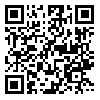1. American Psychiatric Association. Diagnostic and statistical manual of mental disorders: DSM-5. 5th ed. Washington, D.C: American Psychiatric Association; 2013, pp:133–7.
2. Al–Yagon M, Margalit M. Social cognition of children and adolescents with LD: Intrapersonal and interpersonal perspectives. In: Swanson HL, Harris KR, Graham S, editors. Handbook of learning disabilities. New York, London: The Guilford Press; 2013, pp: 278–303.
3. Franklin BM. The first crusade for learning disabilities: the movement for the education of backward children. In: The Formation of School Subjects. 2nd ed. Abingdon: Routledge; 2018. pp:190–209.
4. Peterson RL, Pennington BF. Developmental dyslexia. The Lancet. 2012;379(9830):1997–2007. doi: 10.1016/S0140-6736(12)60198-6
5. Thakran S. Learning disabilities: Types and symptoms. International Journal of Applied Research. 2015;1(5):149–52.
6. Berninger VW, Abbott RD. Listening comprehension, oral expression, reading comprehension, and written expression: related yet unique language systems in grades 1, 3, 5, and 7. J Educ Psychol. 2010;102(3):635–51. [
DOI]
7. Hooper SR, Swartz CW, Wakely MB, de Kruif REL, Montgomery JW. Executive functions in elementary school children with and without problems in written expression. J Learn Disabil. 2002;35(1):57–68. [
DOI]
8. Abdi A, Karami M, Hatami J. The efficacy of improving visual memory through play therapy on reducing spilling errors in dysgraphia student. Journal of Research in Rehabilitation Sciences. 2012;8(4):648–58. [Persian]
9. Hendren RL, Haft SL, Black JM, White NC, Hoeft F. Recognizing psychiatric comorbidity with reading disorders. Front Psychiatry. 2018;9:101. [
DOI]
10. Huang F, Sun L, Qian Y, Liu L, Ma Q-G, Yang L, et al. Cognitive function of children and adolescents with attention deficit hyperactivity disorder and learning difficulties: a developmental perspective. Chin Med J (Engl). 2016;129(16):1922–8. [
DOI]
11. McCoy TE, Conrad AL, Richman LC, Nopoulos PC, Bell EF. Memory processes in learning disability subtypes of children born preterm. Child Neuropsychol. 2013;19(2):173–89. [
DOI]
12. Handler SM, Fierson WM. American Association for Pediatric Ophthalmology and Strabismus. Learning disabilities, dyslexia, and vision. Pediatrics. 2011;127(3):e818-856. [
DOI]
13. Zimmer H, Speiser H, Seidler B. Spatio-temporal working-memory and short-term object-location tasks use different memory mechanisms. Acta psychologica. 2003;114(1):41–65. [
DOI]
14. Seifnaraghi M, Naderi E. Specific learning disabilities: stage of diagnosis and rehabilitational methods. 2nd ed. Tehran, Iran: Arasbaran Pub; 2016, pp: 22–43. [Persian]
15. Khanjani Z, Mahdavian H, Ahmadi P, Hashemi T, Fathollahpour L. Comparison between the effect of neurofeedback and Fernald's multi-sensory approachon treatingchildren with dyslexia. Psychology of Exceptional Individuals. 2013;2(8):117–47. [Persian] [
Article]
16. Taghvayi D, Vaziri Sh, Kashani FL. The effectiveness of integrative approach, Fernald multi-sensory technique on decrease reading disability. Procedia - Social and Behavioral Sciences. 2012;69:1264–9. [
DOI]
17. Dalecki CG. Improving letter and word recognition using a multisensord recognition approach [Thesis for M.Sc. in Education]. [New York, US]: University of New York; 2007, pp: 89–110.
18. Pakofte N, Karimi P, Faramarzi F. Asarbakhshi amoozesh ravesh chand hessi Fernald bar behboud natavani yadgiri emla [The effectiveness of teaching fernald multi-sensory method on improving spelling learning disability]. In: 3rd International Conference on Humanities and Cultural Studies. Tehran, Iran: Center for Empowerment of Cultural and Social Skills of the Community; 2018. [Persian]
19. Bahramian A. Barrasi tasir amoozesh ravesh chand hessi Fernald dar behboud ekhtelal khandan [The effect of teaching fernald multi-sensory method on improving reading disorder]. In: International Conference on Management and Humanities. Tehran, Iran: Vira Institute; 2015. [Persian]
20. Gustafson L. Multi-sensory approach impact on learning sight words and engagement in a positive learning environment. [Thesis for Master of Special Education]. [Illinois, US]: Western Illinois University; 2018, pp: 43–62.
21. Holmes B. Comparative education: some considerations of method. Abingdon: Routledge; 2018, pp:85–96.
22. Agha-Babaie S, Malek_Pour M, Abadi, AA. Comparison of executive functions in children with and without spelling learning disability: performance on the NEPSY Neuropsychology Test. Journal of Clinical Psychology. 2011;3(4):35-40. [Persian] [
DOI]
23. Azizian M, Abedi MR. Construction and standardization of reading level diagnostic test for third grade primary school children. Iranian Journal of Psychiatry and Clinical Psychology. 2006;11(4):379–87. [Persian] [
Article]
24. Willcutt EG, Boada R, Riddle MW, Chhabildas N, DeFries JC, Pennington BF. Colorado Learning Difficulties Questionnaire: validation of a parent-report screening measure. Psychol Assess. 2011;23(3):778–91. [
DOI]
25. Yailagh MS, Abbasi M, Behrozi N, Alipour S, Yakhchali AH. Comparisons of self-determination among students with learning disabilities and without learning disabilities. American Journal of Applied Psychology. 2014;3(2):27. [
DOI]

 ، اکبر محمدی*1
، اکبر محمدی*1 
 ، سارا حقیقت1
، سارا حقیقت1 






